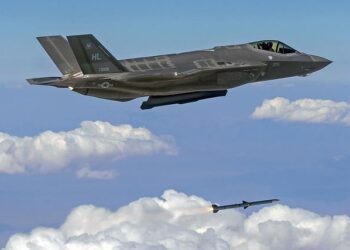Denmark has taken a significant step in modernizing its air defense capabilities by selecting leading suppliers from France, Germany, and Norway. The move, announced recently, underscores Copenhagen’s commitment to strengthening its national security amid evolving regional threats. By partnering with these key European defense manufacturers, Denmark aims to enhance its air surveillance and missile defense systems, aligning with broader NATO strategies and ensuring greater interoperability with allied forces. This decision marks a pivotal moment in Denmark’s defense procurement efforts, reflecting both geopolitical considerations and technological priorities.
Denmark Strengthens Air Defence Through Strategic Partnerships with European Suppliers
Denmark is enhancing its national security framework by engaging key European defense manufacturers. The selected suppliers from France, Germany, and Norway will contribute advanced capabilities to Denmark’s air defense systems, ensuring robust protection against evolving aerial threats. This collaboration marks a significant step in reinforcing regional defense ties and boosting interoperability among NATO allies.
The partnership agreement covers a diverse range of state-of-the-art technologies, including:
- Cutting-edge missile defense systems
- Integrated radar and sensor networks
- Command and control infrastructure upgrades
- Joint training and maintenance programs
| Supplier Country | Key Contribution | Project Timeline |
|---|---|---|
| France | Advanced surface-to-air missile systems | 2024-2027 |
| Germany | Radar and sensor integration | 2024-2026 |
| Norway | Command & control modules | 2024-2025 |
Analyzing the Impact of French German and Norwegian Technologies on Danish Military Capabilities
Denmark’s decision to incorporate technologies from France, Germany, and Norway marks a significant leap in enhancing its air defence architecture. The integration of French missile systems is expected to deliver advanced precision targeting and extended range capabilities, dramatically strengthening missile interception success rates. German contributions, primarily in radar and electronic warfare systems, will augment Denmark’s threat detection and countermeasure effectiveness, providing a multilayered shield against evolving aerial threats. Norwegian technology, known for its adaptability to harsh environments, complements this mix by offering robust command and control solutions that enable rapid decision-making and seamless interoperability among allied forces.
Key impacts on Danish military capabilities include:
- Enhanced Surveillance: Deployment of state-of-the-art radar arrays from Germany, boosting early warning times.
- Improved Missile Defense: Utilization of French surface-to-air missiles with high maneuverability and extended reach.
- Advanced Command Systems: Norwegian software ensuring real-time data integration for coordinated responses.
- Operational Resilience: Technologies tailored to Nordic weather conditions, increasing system reliability.
| Supplier Country | Technology Focus | Strategic Benefit |
|---|---|---|
| France | Missile Systems | Precision targeting, extended missile range |
| Germany | Radar & Electronic Warfare | Improved detection and countermeasures |
| Norway | Command & Control | Real-time data fusion & environmental resilience |
Recommendations for Enhancing Integration and Operational Efficiency in Denmark’s New Air Defence Systems
To maximize the potential of Denmark’s newly acquired air defence systems from France, Germany, and Norway, a harmonized integration strategy must be prioritized. This includes establishing a unified command-and-control framework that facilitates seamless communication across all platforms. Leveraging open architecture standards will ensure interoperability, allowing Denmark’s defence network to adapt quickly to emerging threats and technological advancements. Additionally, joint training exercises and knowledge exchange programs among the supplier countries and Danish forces can accelerate operational readiness and minimize response times.
Operational efficiency can be further enhanced by adopting advanced data analytics and predictive maintenance protocols. Implementing real-time monitoring systems will enable proactive identification of system vulnerabilities, reducing downtime and maintenance costs. Denmark should also focus on developing a centralized logistics hub for spare parts and technical support, streamlining supply chains and ensuring rapid deployment capabilities. Below is a concise overview of key recommendations:
- Unified Command & Control: Integrate platforms with common protocols
- Open Architecture: Facilitate multi-vendor interoperability
- Joint Training: Enhance operator proficiency and cross-national cooperation
- Predictive Maintenance: Employ AI-driven diagnostics
- Centralized Logistics: Optimize supply chain management and support
| Focus Area | Key Benefit | Expected Impact | ||||||||
|---|---|---|---|---|---|---|---|---|---|---|
| Command Integration | Streamlined Decision-Making | Faster Threat Response | ||||||||
| Maintenance Analytics | Reduced Downtime | To maximize the potential of Denmark’s newly acquired air defence systems from France, Germany, and Norway, a harmonized integration strategy must be prioritized. This includes establishing a unified command-and-control framework that facilitates seamless communication across all platforms. Leveraging open architecture standards will ensure interoperability, allowing Denmark’s defence network to adapt quickly to emerging threats and technological advancements. Additionally, joint training exercises and knowledge exchange programs among the supplier countries and Danish forces can accelerate operational readiness and minimize response times. Operational efficiency can be further enhanced by adopting advanced data analytics and predictive maintenance protocols. Implementing real-time monitoring systems will enable proactive identification of system vulnerabilities, reducing downtime and maintenance costs. Denmark should also focus on developing a centralized logistics hub for spare parts and technical support, streamlining supply chains and ensuring rapid deployment capabilities. Below is a concise overview of key recommendations:
|
















